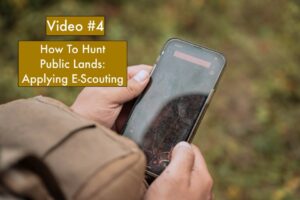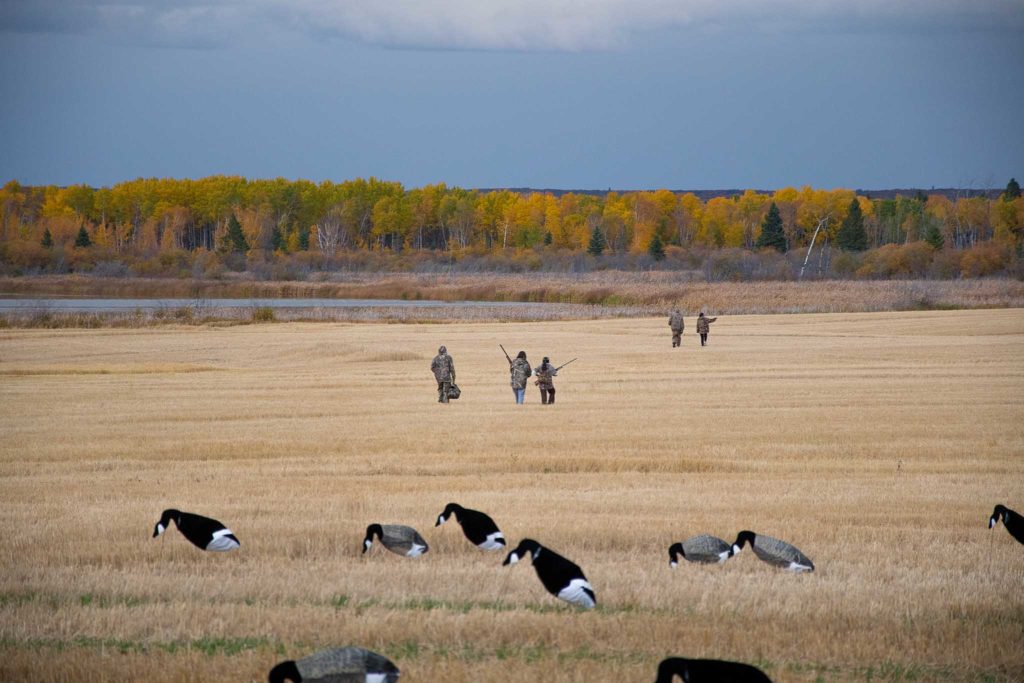
In Treaty 4 Territory, lies Tootinaowaziibeeng (which means Valley River in Ojibway) Treaty Reserve, a wonderful community with a difficult name for me to pronounce. Most of the community members call it TTR or “The Community” for short. Ducks Unlimited Canada, Manitoba Wildlife Federation (MWF), Health Canada, and CN Rail with support from Kent Cartridge, partnered with TTR to help host their first ever mentored waterfowl hunt for ten youth band members at the end of September. Don Clarke, Project Manager of the TTR Traditional Knowledge Center for Climate Change opened the event with a traditional prayer. Don was instrumental in getting this project off the ground working with Council member, Caroline McKay. Together they worked diligently with the rest of TTR’s community for months to organize the program to this point.
After the opening prayer, the youth and a few other community members took and passed their Hunter Education Safety Course. The following day saw an early start where Don Clarke led the youth in instructing how to brine wild game to make jerky. Next the youth met up with shooting instructor Terry McKay who led the youth on the safe use of a shotgun, echoing what they learned the previous day in Hunter Education. Terry then taught them the fine art of clay shooting, by the end of the session all the youth were breaking clays on a consistent basis. The smiles on the new hunters faces when they dusted a clay said it all! To end the day’s tutorials, the youth learned how to set effective decoys spreads for waterfowl. A demonstration on duck and goose calling was also covered.
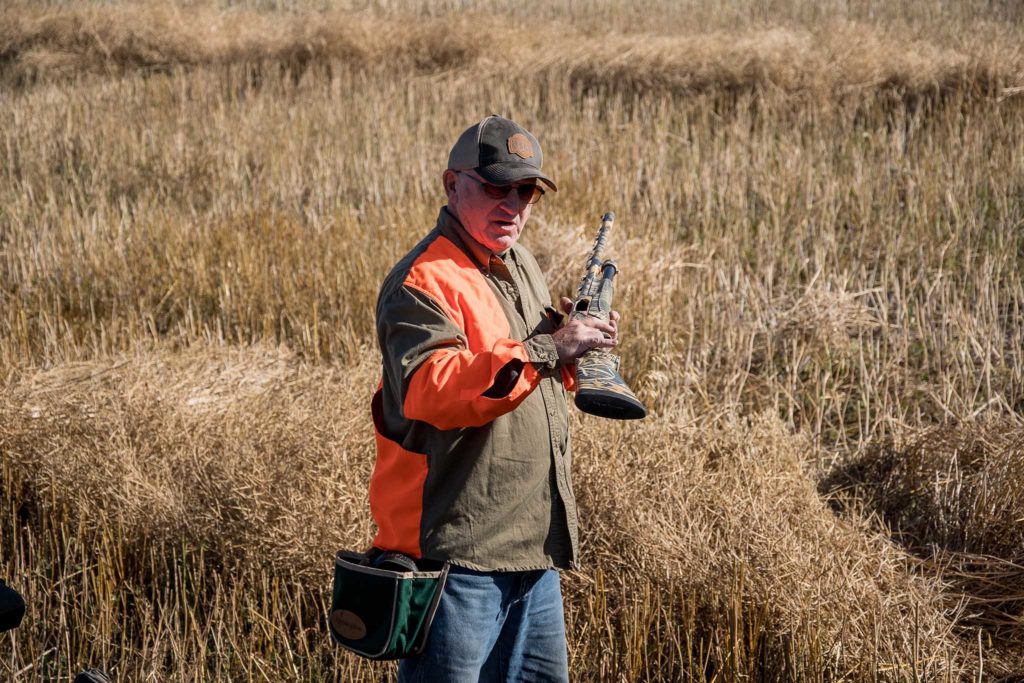
Early the next morning the youth and mentors met up and left for their predetermined hunting locations. I was honoured to have TTR Elder Wilfred Catagas joined me as a mentor this morning as well as youth hunters Grissom Rattlesnake, Charlise Lynxleg, and Shaydan Mckay. Our hunt location was one I had gotten permission for and had been scouting for the last few days, it had 6,000 – 7,000 snow geese as well as a smattering of the smaller cackling geese and ducks which had been utilizing this freshly cut barley field since the day I arrived. The field was typical of this region, with lightly rolling hills, crisscrossed with hedgerows of willows, poplars and mixed hardwoods that were dressed in autumn’s finest golds, oranges and yellows. Also, common to this area are the many potholes. These potholes are filled with water and are what the geese and ducks had been using as their overnight roost.
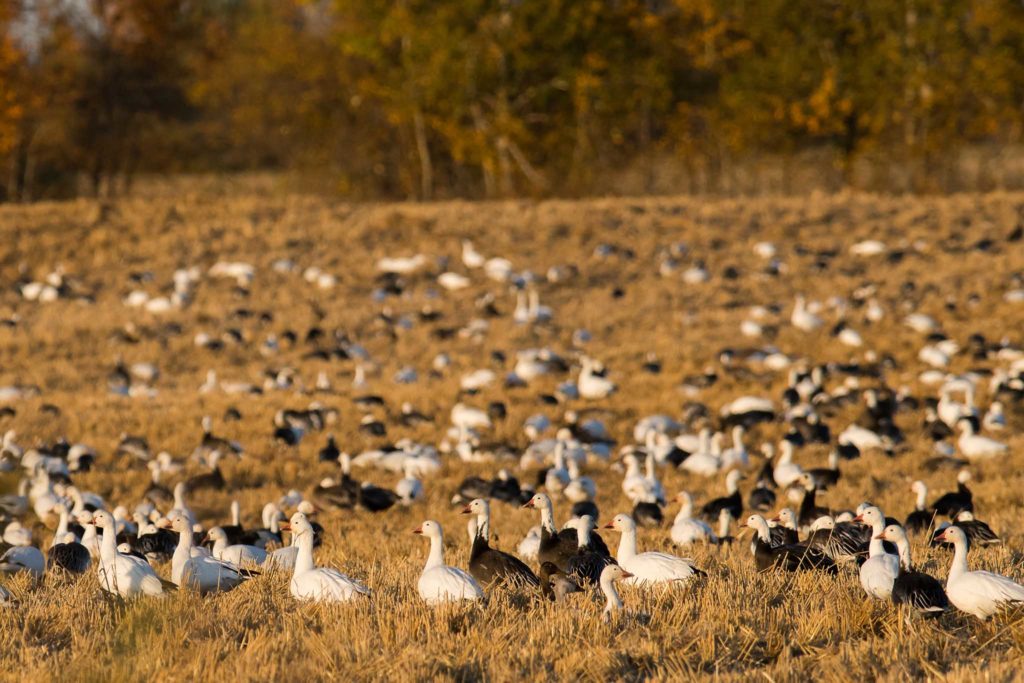
Our early arrival at the field, meant that even the snow geese had not yet stirred on their overnight roost ½ mile to our south. With the decoys set, vehicles were removed from the field and our blind was nestled into the hedgerow. It was a cloudy morning and shooting light, a ½ hour before sunrise, was slow to come. Nasally calls that began to resonate from the roosting pond, an indication from the snow geese that dawn was close at hand. We tucked ourselves further into the brush, to hide from the wary eyes of any goose or duck that happens to give our spread a look. Ask any snow goose hunter and they will describe them as devilish creatures, hard to pattern and even harder to decoy, today was no exception. They got up en masse, thousands of them. All moving like an undulating crashing wave across the sky, just as it was light enough to see. Unfortunately, their ranks began to break, and drop down into the far side of the field. However, for the youth hunters and veteran mentors alike, it was a sight that will not be soon forgotten. As the darkness began to wane, the ducks and smaller cacklers began to trickle into their morning routine of heading out to feed. A few small flocks of ducks gave our modest spread of fakes a look, crossing over the hedgerow trees that we were hiding in. In addition, a passing flock of one of the smaller sub-species of Canada Geese skirted the edge of the decoys. Both of which offered shooting opportunities to our youth hunters, but the fast-moving birds left unscathed. A short time later a single cackling goose cupped its wings and started its descent into our spread. The youth were called to shoot, and a pair of shots rang out, one from each youth, and the goose fell lifeless into the decoy spread. For Charlise, this was her first time harvesting an animal, and she was particularly fascinated by the goose, spending considerable time examining every part of this small waterfowl species. Shortly after, it was time to head back to meet up with the rest of the groups after the morning hunt. Both the youth and mentors had a fantastic day, tales of flocks decoying, duck flights and the enjoyment and fellowship of being on the land were shared amongst all participants. After the youth were sent home for short rest, we met back up again later in the day for the evening hunt with the youth. Upon seeing Charlise again, I asked her what her papa thought of her first goose. She smiled softly and shyly said, “He was really proud of me”.
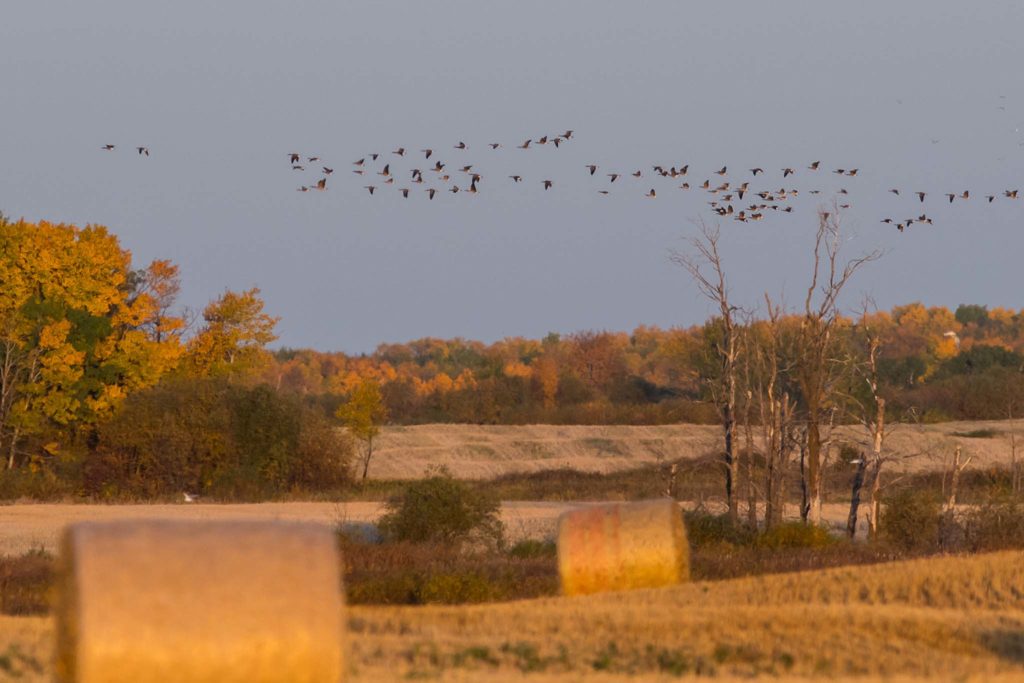
While not a lot of waterfowl were harvested, the goal of this hunt was to build capacity within the community and teach the next generation of TTR youth how to successfully hunt waterfowl in their Traditional Territory. All youth were graduates of the Hunter Education program and were hunting under their Treaty Rights. Manitoba Wildlife Federation was proud to partner with Don Clarke and the community of TTR in the support of this amazing program. MWF looks forward to working with other Indigenous communities across Manitoba in support of their land based programs.
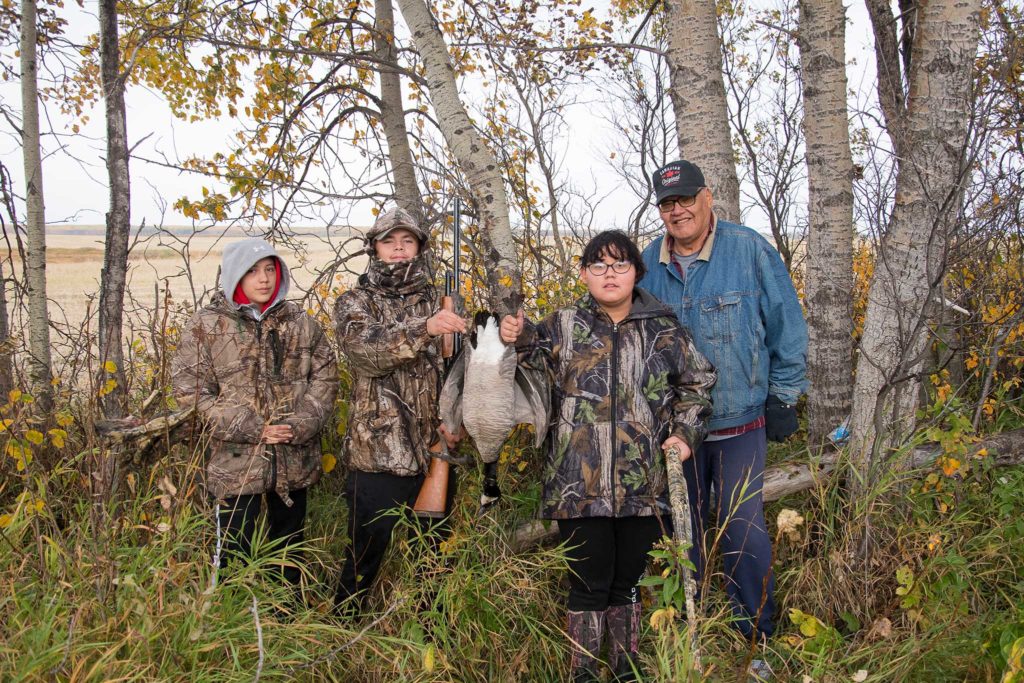
Social distancing measures were in place from those outside the community and individual family bubbles, frequent handwashing, hand sanitizer, and facemasks, as well as other measures were used to ensure the safety of the Elders, knowledge keepers, youth, mentors and trainers.

